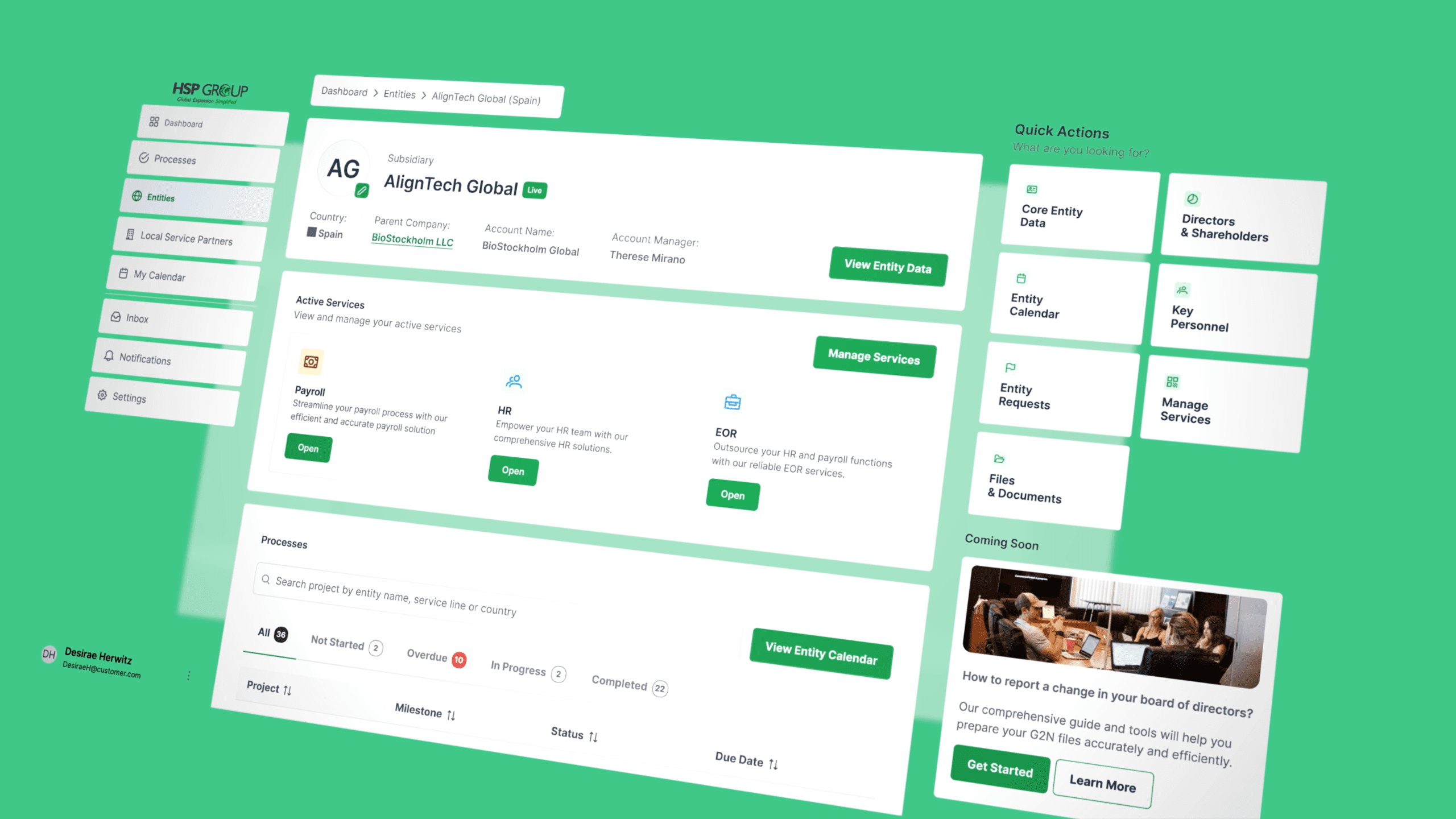Hiring employees globally can be a complex process filled with unique challenges and opportunities. The trend of global hiring is on the rise, driven by the increasing need for diverse talent and the benefits of remote work. To ensure your global hiring strategy is effective, follow this comprehensive global hiring checklist, crafted to help you navigate the intricacies of international recruitment and compliance.
1) Assess Global Talent Needs
Before embarking on your global hiring journey, it’s essential to assess your current talent needs. Evaluate your organization’s talent gaps, identify specific skill requirements, and determine if you have the necessary resources and budget to support new international hires. Conducting this preliminary assessment will help you align your hiring strategy with your business goals and ensure a smooth recruitment process.
2) Develop a Global Recruitment Strategy
A well-defined global recruitment strategy is crucial for successful international hiring. Start by identifying the regions where you want to hire and grow. Research various markets to understand where you can find the talent you need and which locations are more employer-friendly. For instance, US companies can benefit from hiring qualified bilingual talent from Latin America, where economic conditions and time zones align favorably with US operations.
Creating an appealing employer brand is also vital. In a competitive recruitment market, a strong employer brand can help you attract and retain the best talent. Highlight your company’s unique selling points and emphasize your commitment to diversity and inclusion.
3) Source Global Talent
With your strategy in place, begin sourcing talent from around the globe. Utilize technology, international job boards, and recruitment agencies to reach a wider pool of candidates. Attend global job fairs and leverage professional networks to connect with potential hires. An outsourced recruitment provider can also be a valuable resource, helping you navigate the complexities of international hiring.
4) Screen and Select Candidates
You’ve highlighted the talent you want to hire, so now it’s time to conduct the interview process.
When interviewing candidates from different countries, it can be beneficial to implement cross-cultural interview techniques, showing an understanding of their culture.
In this process, you should conduct thorough reference and right-to-work checks.
5) What infrastructure do you need to hire internationally?
So, why choose EoR solutions?
EoR solutions have been around for years. The effects of the pandemic and the introduction of “Work From Anywhere” meant that remote working became mainstream. As such, EoR solutions became an increasingly popular option for companies looking to hire internationally without needing a legal entity.
Acting as a quick-to-market, mitigated risk solution, EoR provides businesses with access to a fresh pool of talents in various countries. This allows companies to conduct global business expansion with minimal chances of risk, such as violating local employment or tax laws.
6) Ensure Legal Compliance
A crucial step that cannot be overlooked is ensuring legal compliance.
For this, you must navigate the visa and work permit requirements where applicable and maintain legal and data protection compliance at every step.
Employers need to have a firm understanding of the different local laws and regulations in other markets and ensure they comply with them. Hiring in multiple countries can quickly become complicated, so it’s essential to have the right support to guide you through the process.
For reference, here are some areas of legal compliance that need to be factored in:
- Payroll compliance
- Tax Compliance
- Local labor laws
- Annual leave
- Remote work compliance
- Equipment compliance
7) Onboard and Integrate Globally
You’ve hired your new talent – this is an exciting step in the growth of your business!
We recommend creating a robust onboarding program to ensure your new talent beds in the company. This is especially important when hiring remote staff, as they need to feel integrated and involved in the company despite working from a different location.
To support this, you should foster cross-border collaboration and communication, keeping in regular contact with your new hires to ensure they have everything they need and are settling into the company smoothly.
8) Manage and Retain Global Talent
Once you’ve successfully hired the new talent, it’s time to turn your focus to retention.
To do this, you should prioritize areas such as performance management, utilizing HR and People solutions.
It’s also important to keep on top of and address any cultural challenges and conflicts as and when they arise. This will ensure that you’re presented as an employer that actively works with its remote teams to keep employees happy while providing effective business operations.
As you can see, there are various steps involved in global hiring, some quite extensive, and multiple areas to consider that you might not have realized. From ensuring smooth onboarding to navigating the complexities of compliance requirements in different markets, what seems like a simple list can soon become complex and time-consuming.
Need help with your global hiring checklist?
From global hiring solutions to onboarding and supporting the employee lifecycle, HSP Group has a range of global people solutions to help you.
Contact us today to learn more about how our expert team can help you with your global hiring needs.
Frequently Asked Questions
What is a global hiring checklist?
A global hiring checklist is a comprehensive guide that outlines the steps and considerations for hiring employees from different countries. It includes assessing talent needs, developing a recruitment strategy, ensuring legal compliance, and more.
Why is legal compliance important in global hiring?
Legal compliance is crucial to avoid penalties and legal issues. It ensures that you adhere to local labor laws, visa requirements, and data protection regulations in the countries where you hire.
How can an Employer of Record (EoR) help in global hiring?
An EoR handles payroll, tax, and compliance issues on behalf of your company, allowing you to hire employees in different countries without setting up a legal entity. This simplifies the hiring process and mitigates risks.
What are the benefits of a strong employer brand in global hiring?
A strong employer brand attracts top talent by showcasing your company’s values, culture, and commitment to diversity. It helps set your organization apart in a competitive recruitment market.
What should be included in an onboarding program for remote employees?
An effective onboarding program for remote employees should include clear communication, cultural integration, training sessions, regular check-ins, and access to necessary resources and support.
How can businesses retain international talent?
To retain international talent, focus on performance management, address cultural challenges, and provide continuous support. Creating a positive work environment and offering competitive benefits can also help retain employees.






